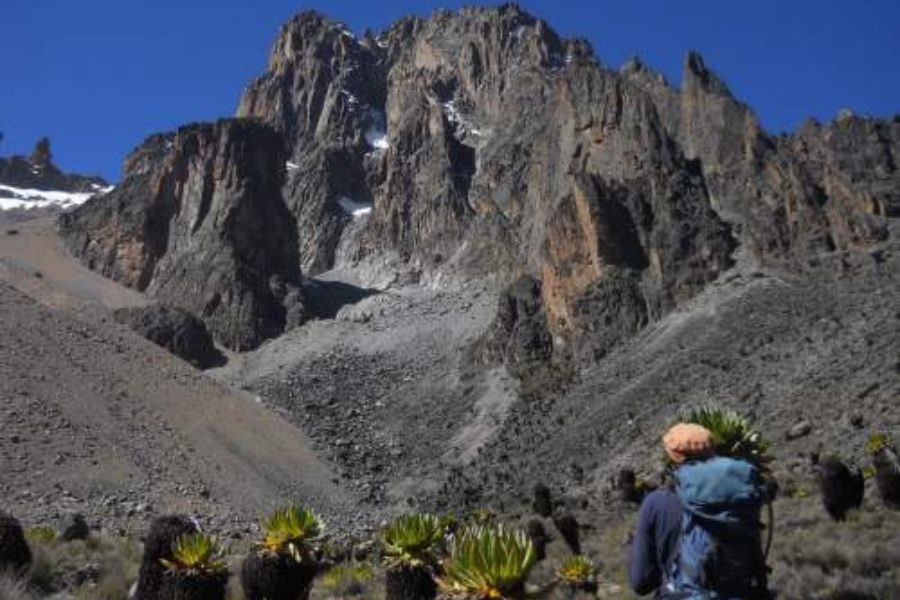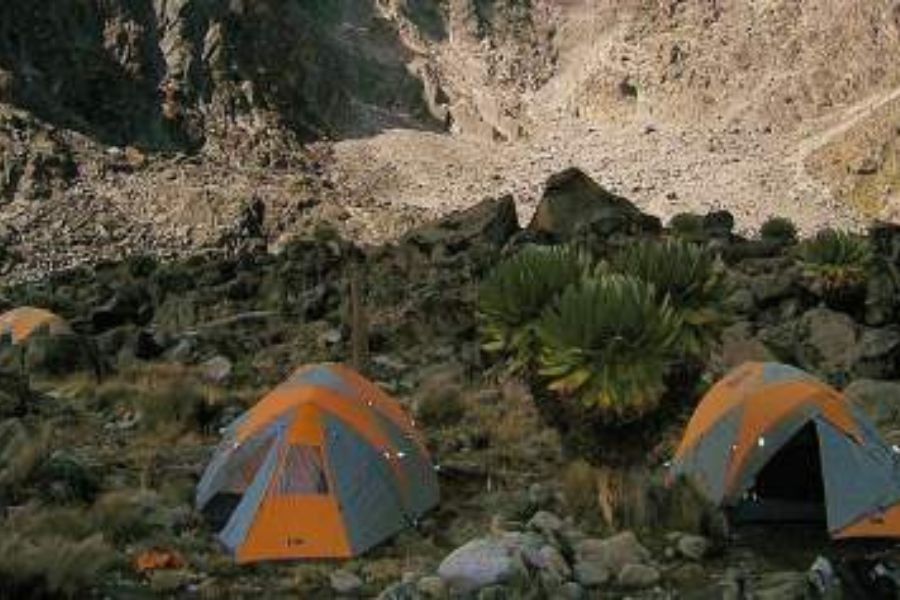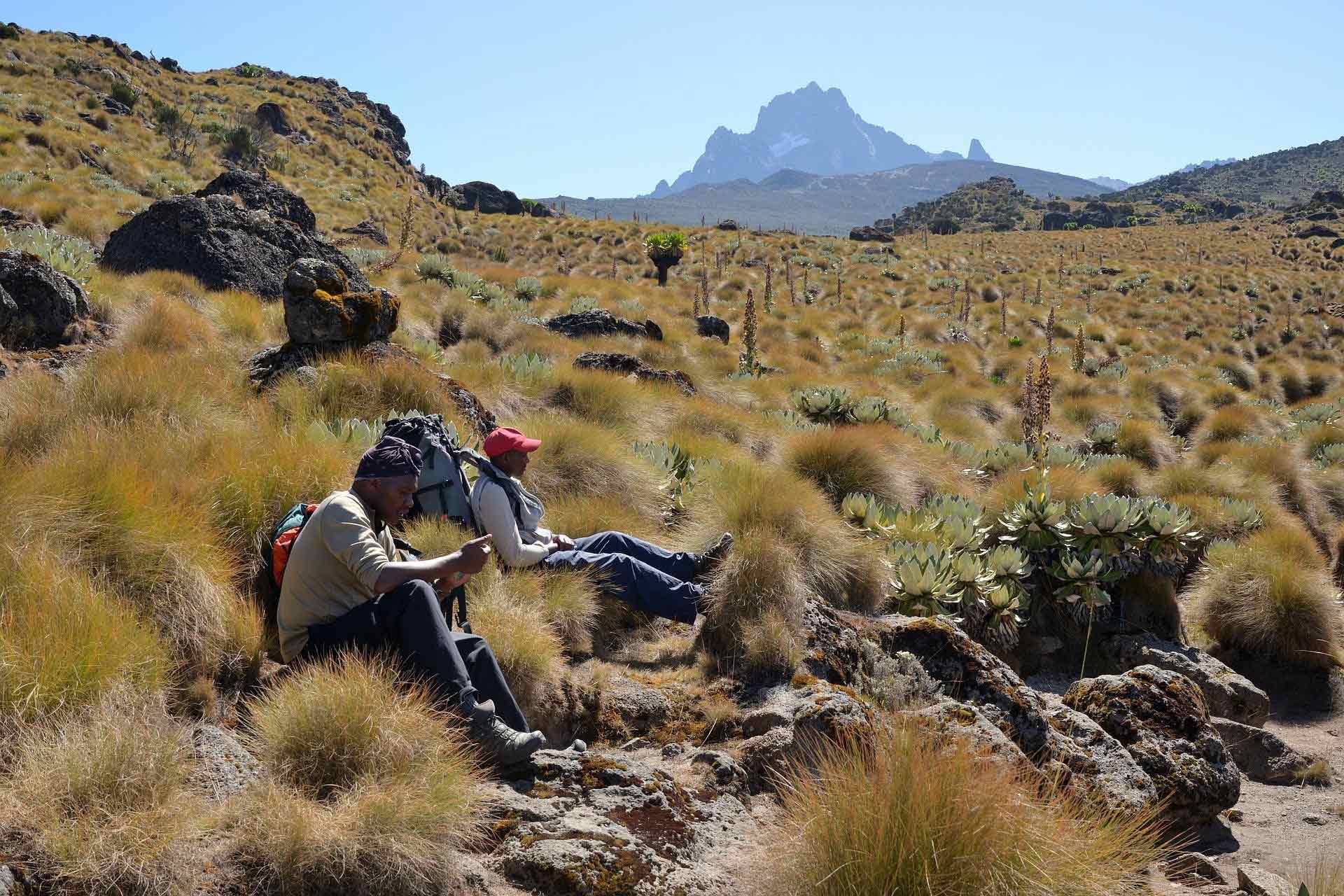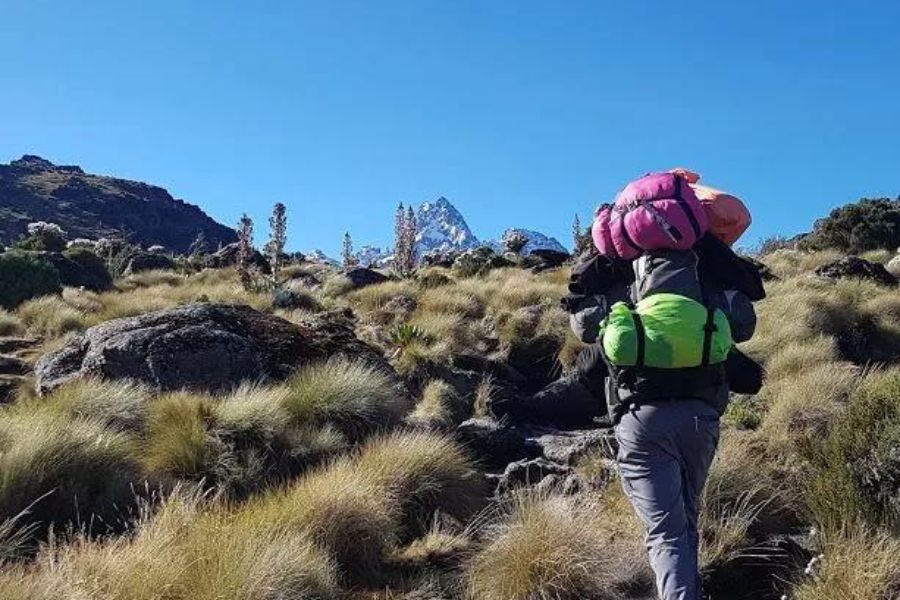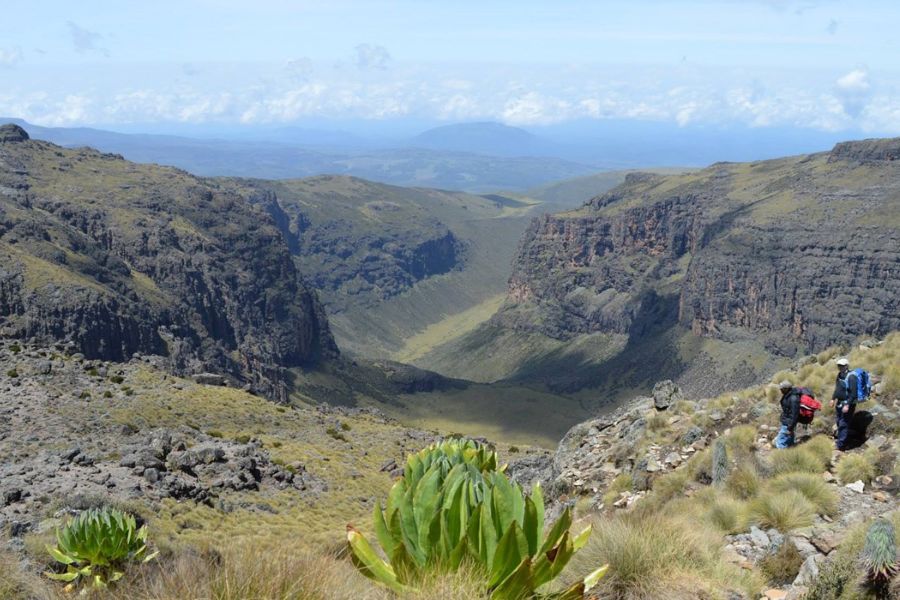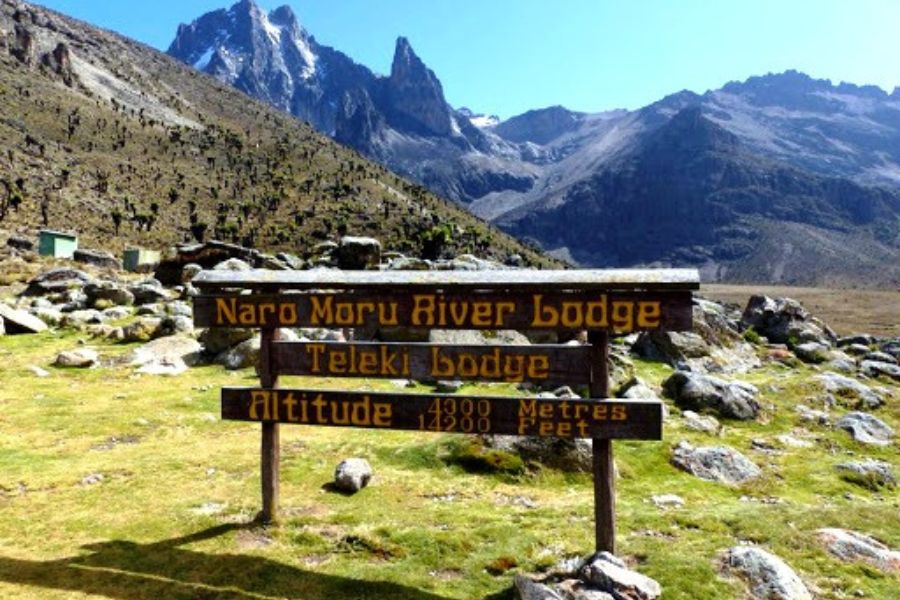OVERVIEW
Mount Kenya National Park is a UNESCO World Heritage Site located in central Kenya. It is home to Mount Kenya, the second-highest mountain in Africa, and a variety of wildlife and ecosystems. The park was established in 1949 and covers an area of 715 square kilometers.
The park is known for its diverse landscapes, which include glaciers, forests, moorlands, and lakes. It is also home to a variety of wildlife, including elephants, buffalo, lions, leopards, and rhinos. The park is a popular destination for hiking, camping, and mountain climbing.
The distance from Nairobi to Mount Kenya National Park is approximately 175 kilometers by road. The journey takes around 3-4 hours, depending on traffic conditions.
There are three main routes from Nairobi to Mount Kenya National Park:
- Nanyuki route: This is the most popular route and takes you through the towns of Thika and Nanyuki.
- Nyeri route: This route takes you through the towns of Thika and Nyeri.
- Embu route: This route takes you through the towns of Embu and Chogoria.
All three routes are well-maintained and offer scenic views of the Kenyan countryside.
If you are flying to Mount Kenya National Park, the closest airport is Nanyuki Airport, which is located just outside of the park. There are daily flights from Nairobi Wilson Airport to Nanyuki Airport.
FEATURES
Here are some of the key features of Mount Kenya National Park:
- Mount Kenya:The highest peak in the park is Batian, which is 5,199 meters tall. Mount Kenya is an extinct volcano that was formed millions of years ago.
- Wildlife: The park is home to a variety of wildlife, including elephants, buffalo, leopards, rhinos, zebras, giraffes, and antelope. The park is also home to a variety of birdlife, including the African fish eagle, the crowned crane, and the turaco.
- Vegetation: The park has a variety of vegetation zones, including forests, moorlands, and alpine grasslands. The forests are home to a variety of trees, including cedar, juniper, and olive trees. The moorlands are home to a variety of grasses, shrubs, and wildflowers. The alpine grasslands are home to a variety of lichens and mosses.
- Climate: The park has a variety of climates, depending on the altitude. The lower slopes of the mountain are warm and humid, while the higher slopes are cold and dry. The mountain is often snow-capped, even in the summer months.
Mount Kenya National Park is a popular destination for tourists from all over the world. Visitors can enjoy a variety of activities in the park, including hiking, camping, mountain climbing, wildlife viewing, and birdwatching. The park is also home to a number of lodges and campsites, so visitors can stay overnight and enjoy the park's beauty for multiple days.
MOUNT KENYA
Mount Kenya is Africa’s second-highest mountain at 5,199m (17,058 feet) and the highest of all Kenya Mountains. Mount Kenya is roughly circular, about 60km across at the 200mm contour, where the steep font hills rise out of the gentler slopes of the centered highlands. At the center of the massif, the main peaks rise sharply from around 4,500m to the main summit of Batian 5,199m, Nelion 5,188m, and point Lenana 4,985m.
Other major summits on the mountain include Point Piggott 4,957m, Point Dutton 4,885, and Point John 4,883m. Of the three main peaks (Batian, Lenana, and Nelion), point Lenana can be reached by climb Mount Kenya trekkers and the other two being only for technical climbers. Mount Kenya is the second highest peak in Africa and stands somewhat unjustly in the shadow of its taller neighbor Kilimanjaro, which lies some 320km away in the south and is visible on a clear day.
Mount Kilimanjaro may see much more traffic - due to the possibility of summiting via several non-technical trekking routes and due to the sometimes dubious honor of being one of the Seven Summits - but Mount Kenya climbing routes offers a wealth of excellent and diverse climbing possibilities on rock, snow, and ice.
The rock climbing Mount Kenya can be of variable quality but is at its best high on the mountain where the syenite rock is similar to granite. It is rough, hard, and well endowed with features.
Apart from the superb climbing potential on Mount Kenya, its tarns and alpine meadows; exotic, equatorial, high-altitude vegetation; sunbirds, hyrax, and soaring eagles make the walk around the peaks one of the most beautiful expeditions in the East African mountains.
After the cultivated farmlands on the lower slopes, the trails pass through the rain forest, rich in trees of many species but noticeably camphor, then onto a bamboo zone growing to heights of more than 12m or more up through open moorland before reaching the moonscape of higher slopes. The forests are rich in wildlife including elephants, buffalo, and monkeys with even the moor lands offering a long list of mammals including the rock hyrax, the nearest living relative of the elephant.
The rock climbing Mount Kenya can be of variable quality but is at its best high on the mountain where the syenite rock is similar to granite. It is rough, hard, and well endowed with features.
Apart from the superb climbing potential on Mount Kenya, its tarns and alpine meadows; exotic, equatorial, high-altitude vegetation; sunbirds, hyrax, and soaring eagles make the walk around the peaks one of the most beautiful expeditions in the East African mountains.
After the cultivated farmlands on the lower slopes, the trails pass through the rain forest, rich in trees of many species but noticeably camphor, then onto a bamboo zone growing to heights of more than 12m or more up through open moorland before reaching the moonscape of higher slopes. The forests are rich in wildlife including elephants, buffalo, and monkeys with even the moor lands offering a long list of mammals including the rock hyrax, the nearest living relative of the elephant.
Mt. Kenya is an ancient volcanic mountain much older than Mt. Kilimanjaro. It’s believed to have once reached well above 600m. What is left today is a volcanic plug which erosion has fashioned into the complex jagged outline of the central peaks.
Mt. Kenya is Popular with Hiking, Climbing and Trekking. The main Mount Kenya trekking route are Naro Moru route, Nanyuki, Sirimon route on Mount Kenya, Shiptons Camp.
BEST MONTHS TO TREK MOUNT KENYA
Although climbing Mount Kenya can be done all year round, the highest rainfall occurs between late March and the middle of May. The rain is slightly less between late October and mid-December. Maximum rainfall occurs in the forest belt and on the south-east side of the mountain where it reaches 2500mm. per year at 3000m. Rain and, higher up, snow can however be encountered at any time of year - even in the driest periods (January and February). Normally the drier seasons are associated with clear, dry weather which can last for many days on end. The best weather is generally in the mornings, and convectional rainfall, if any, tends to come in the mid-afternoon.
Temperatures vary considerably with height and with the time of day. At 3000m. frosts can be encountered at night while day temperatures range from 5 to 15°C. Nighttime temperatures on the summit are well below freezing. The south-facing side of Mount Kenya receives more sunshine in the December to March period. During this time rock climbs are "in-condition" and snow and ice climbs gradually deteriorate. In the June to October period, the north-facing rock climbs and south-facing ice climbs are the best months.
The best months and safest time to climb Mt. Kenya is during the dry seasons: January - February, and August to September away from the most reliably fine weather. The main routes are likely to be more crowded at this time of the year. If you favor complete solitude over the sunny skies, try going slightly off the peak season. It’s best to avoid the two rainy seasons from mid-March until June and from late October to the end of December.
Temperatures vary considerably with height and with the time of day. At 3000m. frosts can be encountered at night while day temperatures range from 5 to 15°C. Nighttime temperatures on the summit are well below freezing. The south-facing side of Mount Kenya receives more sunshine in the December to March period. During this time rock climbs are "in-condition" and snow and ice climbs gradually deteriorate. In the June to October period, the north-facing rock climbs and south-facing ice climbs are the best months.
The best months and safest time to climb Mt. Kenya is during the dry seasons: January - February, and August to September away from the most reliably fine weather. The main routes are likely to be more crowded at this time of the year. If you favor complete solitude over the sunny skies, try going slightly off the peak season. It’s best to avoid the two rainy seasons from mid-March until June and from late October to the end of December.
MOUNT KENYA VEGETATION:
Mount Kenya is home to some fascinating high-altitude alpine vegetation including giant groundsels and lobelias.
In the lower-altitude forest zone, trekkers may come across some rather large and uncompromising African wildlife such as elephants and buffalo. Fortunately, these are mostly active only at night. Lions, leopards, rock hyrax, various antelope species, and a wide range of other large and small creatures occur in the park. Mount Kenya Forest Vegetation And
Coverage In Percentage:
Bamboo - 10%
Bamboo and Forest Mix - 23%
Forest - 32%
Bushy Forest - 11%
Grassland - 8.5%
Plantation - 9%
Other - 6.5%
MOUNT KENYA CLIMBING ROUTES / ITINERARIES
-
There are three main routes, which penetrate the forest and the moorland. The routes are the Naro Moru route, Sirimon route, and Chogoria route. Each of the routes has something different to offer. The group trek Mount Kenya Climbing Expeditions has offers for the below-hiking routes.
It is possible to combine group hiking Mt. Kenya with Kenya safaris. To hike Mt Kenya, one must be equipped with the right gears including warm sleeping bags, and should know the best routes to use. Remember, it is possible to combine this adventure expedition with a 5-day safari to some of the Kenyan parks.
Climb Mount Kenya Naromoru route -The Naro Moru Route is the most popular route on Mount Kenya, and for good reason. It is a well-maintained route with a variety of landscapes, including forests, moorlands, and alpine meadows. The route also offers stunning views of the mountain's central peaks.The Naro Moru Route typically takes 4-5 days to complete, depending on your fitness level and how many acclimatization days you choose to take. The route begins at the Naro Moru Gate, which is located on the west side of the mountain. From the gate, the route ascends through a forest to the Met Station Camp, which is located at an altitude of 3,000 meters.From the Met Station Camp, the route continues to ascend through moorlands to the Mackinder Valley, which is located at an altitude of 4,200 meters. The Mackinder Valley is a beautiful alpine meadow that is surrounded by towering peaks.From the Mackinder Valley, the route continues to ascend to the Point Lenana Camp, which is located at an altitude of 4,985 meters. Point Lenana is the third-highest peak on Mount Kenya and offers stunning views of the surrounding mountains and valleys.
Mount Kenya Climbing Chogoria route -The Chogoria Route is the least popular route on Mount Kenya, but it is still a beautiful and challenging route. The Chogoria Route is known for its dense forests and its stunning views of the mountain's eastern slopes.The Chogoria Route typically takes 4-5 days to complete, depending on your fitness level and how many acclimatization days you choose to take. The route begins at the Chogoria Gate, which is located on the southeast side of the mountain. From the gate, the route ascends through a dense forest to the Lake Ellis Camp, which is located at an altitude of 3,500 meters.From the Lake Ellis Camp, the route continues to ascend through moorlands to the Simba Camp, which is located at an altitude of 4,200 meters. Simba Camp is the highest camp on the Chogoria Route and offers stunning views of the mountain's eastern slopes.From Simba Camp, the route continues to ascend to the Point Lenana Camp, which is located at an altitude of 4,985 meters. Point Lenana is the third-highest peak on Mount Kenya and offers stunning views of the surrounding mountains and valleys.
Climbing Mount Kenya Sirimon route -The Sirimon Route is a less popular route than the Naro Moru Route, but it is still a beautiful and challenging route. The Sirimon Route is known for its gradual ascent and its stunning views of the mountain's central peaks.The Sirimon Route typically takes 4-5 days to complete, depending on your fitness level and how many acclimatization days you choose to take. The route begins at the Sirimon Gate, which is located on the northwest side of the mountain. From the gate, the route ascends through a forest to the Old Moses Camp, which is located at an altitude of 3,300 meters.From the Old Moses Camp, the route continues to ascend through moorlands to the Shipton's Camp, which is located at an altitude of 4,250 meters. Shipton's Camp is the highest camp on the Sirimon Route and offers stunning views of the mountain's central peaks.From Shipton's Camp, the route continues to ascend to the Point Lenana Camp, which is located at an altitude of 4,985 meters. Point Lenana is the third-highest peak on Mount Kenya and offers stunning views of the surrounding mountains and valleys.Note: The normal pattern of weather on Mount Kenya is for clear mornings with mist closing in from 10:00 am although this can clear by evening. Therefore, early morning climb Mt Kenya starts are the order of the day with a 2 am start for the final ascent to point Lenana, if you want to catch the sunrise. Go to Mount Kenya now and experience the majestic sunrise over Mt. Kenya. Sirimon route Mount Kenya is one of the best routes to use to hike to Lenana Peak.
WHICH ROUTE SHOULD YOU CHOOSE?
The best route for you will depend on your fitness level, experience, and budget. If you are a first-time climber, the Naro Moru Route is a good option because it is well-maintained and offers a variety of landscapes. If you are looking for a more challenging route, the Sirimon Route is a good option because it has a gradual ascent and offers stunning views of the mountain's central peaks. If you are looking for a less popular route, the Chogoria Route is a good option because it has dense forests and stunning views of the mountain's eastern slopes.No matter which route you choose, be sure to acclimatize to the altitude before attempting to summit Point Lenana. Acclimatization is important to prevent altitude sickness. It is also important to be prepared for all types of weather conditions, as the weather on Mount Kenya can change
HOW LONG DOES IT TAKE TO CLIMB MOUNT KENYA?
Read below Climbing Mt Kenya itineraries and pricing that might be of help in making your hiking Mt. Kenya plans. Remember to attempt the hike, warm sleeping bags are required as it gets really cold up there. Also, technical climbing options available to reach the topmost peaks for the ardent climbers.
If you decide to do technical climbing to the summits of Batian and Nelion peaks, one of the most popular huts from which to start the summit climb is the Austrian Hut or the Top Hut at 4700m. It is advisable to allow an extra day at Austrian Hut in case the weather does not permit a technical climb on the first attempt. To hit Batian and Nelion Peaks involves technical climbing and the climbers must be technically fit enough.
Mount Kenya technical climb via the North Face route is usually preferred during the northern hemisphere summer (June to August, through September and early October could be possible). During these months, the sun will be marginal to the North of the mountain, considering it falls on the Equator. During this time, less snow and ice, making climbing a lot easier with warmer rocks due to the sun.
April, May and October, and/or November falls within the rainy seasons in Kenya. To climb in the December to March season, consider using South East Face summiting Nelion from the south-east face, and Batian through the Gates of Mist.
Mount Kenya Climbing Itineraries:
4 Days Mount Kenya Climbing Naro Moru Route
4 Days Mount Kenya Trekking Sirimon Route
5 Days Mount Kenya Trekking Chogoria Route Down Naro Moru
5 Days Mount Kenya Sirimon Route Down Chogoria
The Gorges Valley is a major feature on the Chogoria RouteThis route leads from Chogoria town up to the peaks circuit. The 32 km (20 miles) from the forest gate to the park gate are often done by vehicle, but it is also possible to walk. There is much wildlife in the forest, with safari ant columns crossing the track, monkeys in the trees, and the potential for seeing elephants, buffalo, and leopards. The road is not in good condition, and requires careful driving and walking. Near the park gate, the bamboo zone starts, with grasses growing to 12 m high (40 ft).
Once in the park, the track passes through rosewood forests, with lichens hanging from the branches. At one point the path splits, with the smaller track leading to a path up the nearby Mugi Hill and across to Lake Ellis.
The Temple is a large overhanging buttress overlooking Lake Michaelson, close to Hall Tarns. Near the track, head a small bridge crosses the Nithi stream. Following the stream downriver a few hundred meters (yards) leads to The Gates Waterfall. The path heads up a ridge above the Gorges Valley, with views to the peaks, Lake Michaelson, The Temple, and across the valley to Delamere and Macmillan Peaks. Hall Tarns are situated right on the path and above The Temple, which is a 300 m (1,000 ft) cliff above Lake Michaelson.
As the path carries on it crosses the flat head of the Nithi River and then the slope steepens. The path splits, heading west to Simba Col, and southwest to Square Tarn. These are both on the Peak Circuit Route of hiking Mt. Kenya.
Naro Moru Route hike
Vertical bog on Mount Kenya on the Naromoru Route. This route is taken by many of the trekkers who try to reach Point Lenana. It can be ascended in only 3 days and has bunkhouses at each camp so a tent is not necessary. The terrain is usually good, although one section is called the Vertical Bog.
Go to Mount Kenya climb via Naro Moru route. The track starts in Naro Moru town and heads past the Park Headquarters up the ridge between the Northern and Southern Naromoru Rivers. At the road-head is the Meteorological Station, to which it is possible to drive in the dry season. The route drops down into the Northern Naro Moru valley to Mackinder's Camp on the Peak Circuit Path.- In terms of Mt Kenya hiking prices, Naro Moru and Sirimon are the cheapest hiking routes. See individual programs and learn more about affordable Mt Kenya climbing prices.
Sirimon Route Mount Kenya trek
This route starts 15 km (9 miles) east around the Mount Kenya Ring Road from Nanyuki. The gate is 10 km (6 miles) further along the track, which can be walked or driven by two-wheel drives.
The track climbs up through the forest. On the north side of the mountain, there is no bamboo zone, so the forest gradually turns into moorland covered with giant heather. The track ends at Old Moses Hut and becomes a path. This continues up the hill before splitting into two routes. To the left, the least used path goes around the side of the Barrow, to Liki North Hut. Vegetation becomes more sparse, with giant lobelia and groundsels dotted around. Also, the path climbs over a ridge, before rejoining the main path ascending the Mackinder Valley. Shipton's Cave can be found in the rock wall to the left of the steep path just before reaching Shipton's Camp.
From Shipton's Camp, it is possible to ascend the ridge directly in front of the camp to the site of Kami Hut, which no longer exists. Alternatively, follow the river up to Lower Simba Tarn and eventually to Simba Col. These are both on the Peak Circuit Path.
Main Peaks of Mount Kenya: Mt Kenya elevation:
- Batian (5199 m - 17,058 ft)
- Nelion (5188 m - 17,022 ft)
- Point Lenana (4985 m - 16,355 ft)
- Coryndon Peak (4960 m - 16,273 ft)
- Point Pigott (4957 m - 16,266 ft)
- Point Thompson (4955 m - 15,466 ft)
- Point Dutton (4885 m - 16,027 ft)
- Point John (4883 m - 16,016 ft)
- Point Melhuish (4880 m - 16,010 ft)
- Point John Minor (4875 m - 15,990 ft)
- Krapf Rognon (4800 m - 15,740 ft)[17]
- Point Peter (4757 m - 15,607 ft)
- Point Slade (4750 m - 15,580 ft)
- Terere (4714 m - 15,462 ft)
- Sendeyo (4704 m - 15,433 ft)
- Midget Peak (4700 m - 15,420 ft)
- The Hat (4639 m - 15,220 ft)
- Delamere Peak
- Macmillan Peak
Glaciers on Mount Kenya trek
Glaciers on Mount Kenya are retreating rapidly. The Mountain Club of Kenya in Nairobi has photographs showing the mountain when it was first climbed in 1899. Again more recently, and the retreat of the glaciers is very evident. Descriptions of ascents of several of the peaks advise on the use of crampons, but now there is no ice to be found.
There is no new snow to be found. Even on the Lewis Glacier (the largest of them) in winter, so no new ice will be formed. It is predicted to be less than 30 years before there is no more ice on Mount Kenya, climbing & trekking Mt Kenya.
The area of glaciers on the mountain was measured in the 1980s and recorded as about 0.7 km² (0.25 square miles). This is far smaller than the first observations, made in the 1890s.
The area of glaciers on the mountain was measured in the 1980s and recorded as about 0.7 km² (0.25 square miles). This is far smaller than the first observations, made in the 1890s.
Water streams starting around Mount Kenya
Mount Kenya is the main water catchment area for two large rivers in Kenya. The two are the Tana River, the largest river in Kenya, and the Ewaso Ng'iro North. The Mount Kenya ecosystem provides water directly for over 2 million people.
Mount Kenya is the main water catchment area for two large rivers in Kenya. The two are the Tana River, the largest river in Kenya, and the Ewaso Ng'iro North. The Mount Kenya ecosystem provides water directly for over 2 million people.
The streams that start on Mount Kenya are:
-
The Sirimon
-
The Liki
-
The Nanyuki
-
Mutonga
-
Kithino
-
The Nazita
-
Thingithu
-
The Nitmi
-
The Tnuchi
-
Kathita
-
The Nyamindi
-
The Sagana
-
The Nairobi
-
The Naro Moru
-
The Burguret

